Re-Foresting: Cohabitation of Human and Trees
Image
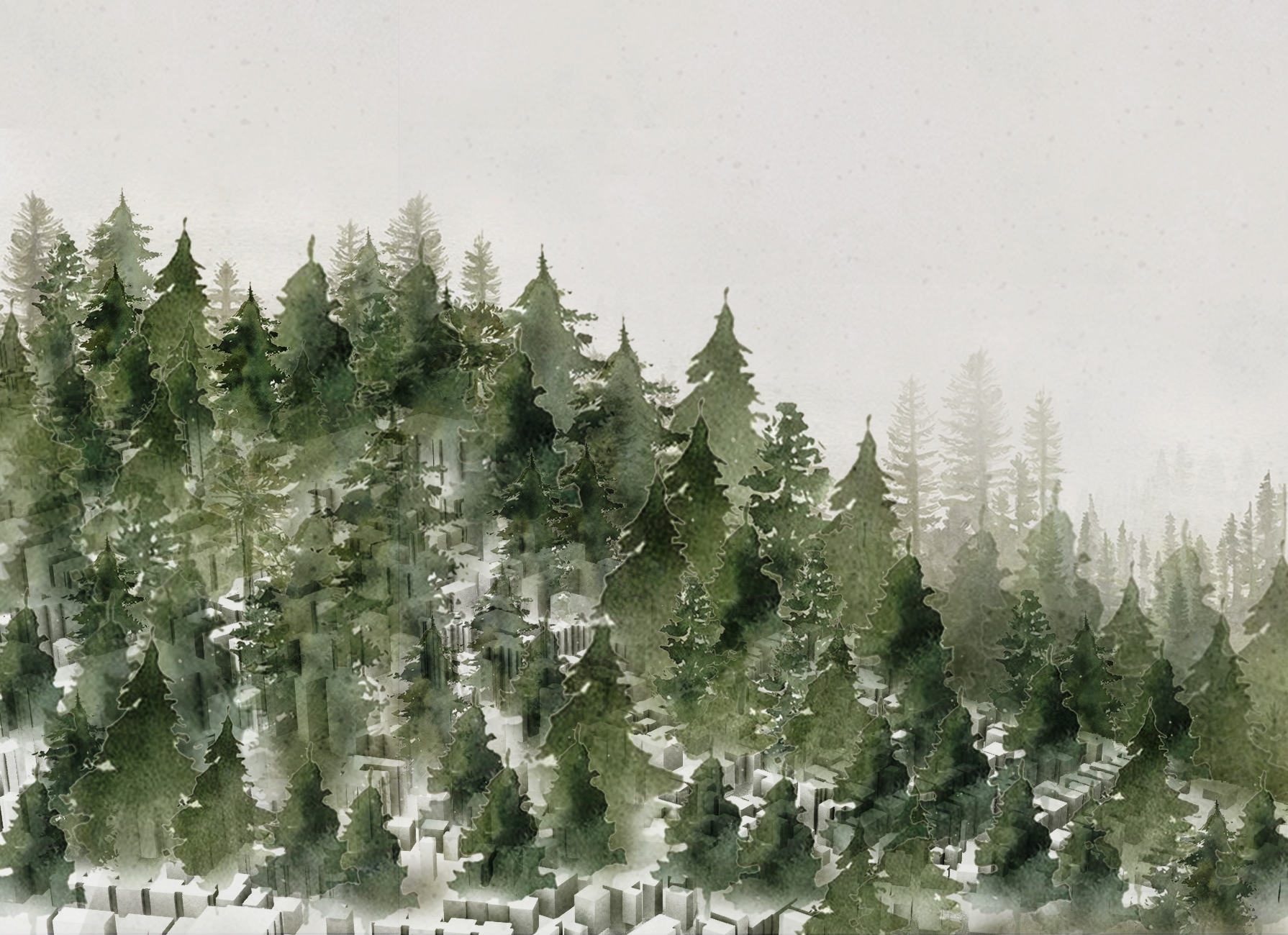
ABSTRACT
This thesis starts with the ideological thinking of the interconnected and interdependent relationship between humans and non-humans. Taking the tree as an example, this research focuses on rethinking our urban built environment, and dynamic urban ecotones where humans and trees cohabitate.
It reframes the city from the bottom up with the consideration of root ecology and canopy ecology, focusing on this important metaphor for the infrastructure of the city. The goal is to develop healthy, productive co-dependencies between natural and man-built environments.
It proposes a utopian point of view for our cities and imagines a forest city with an asymmetrical street, shared spaces for the tree, cars in parking lots, new green networks, and a new community understanding of the importance of trees in our lives. It hopes to awaken people’s awareness and interests in trees then expand and build empathy with non-human elements of our world.
Image
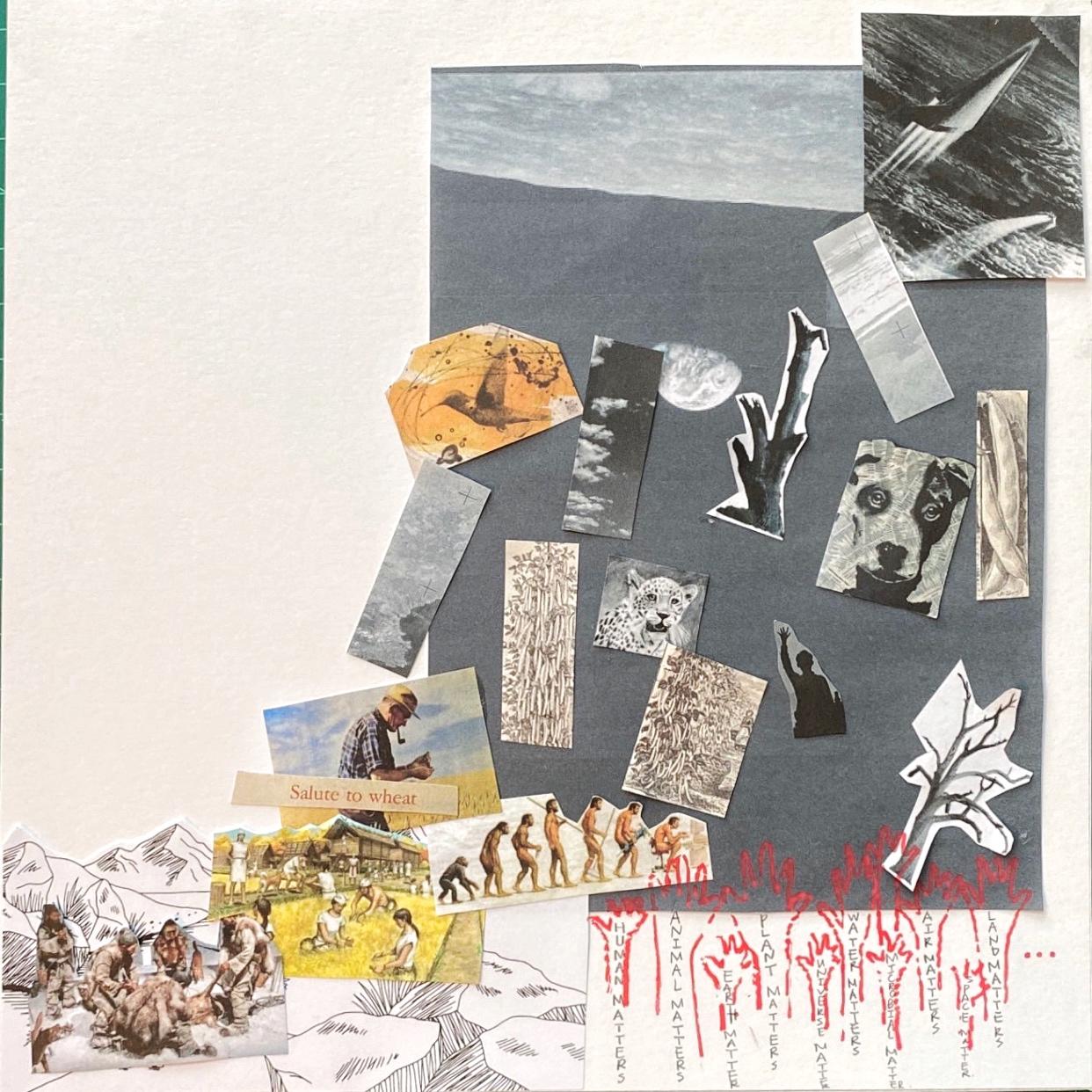
Image
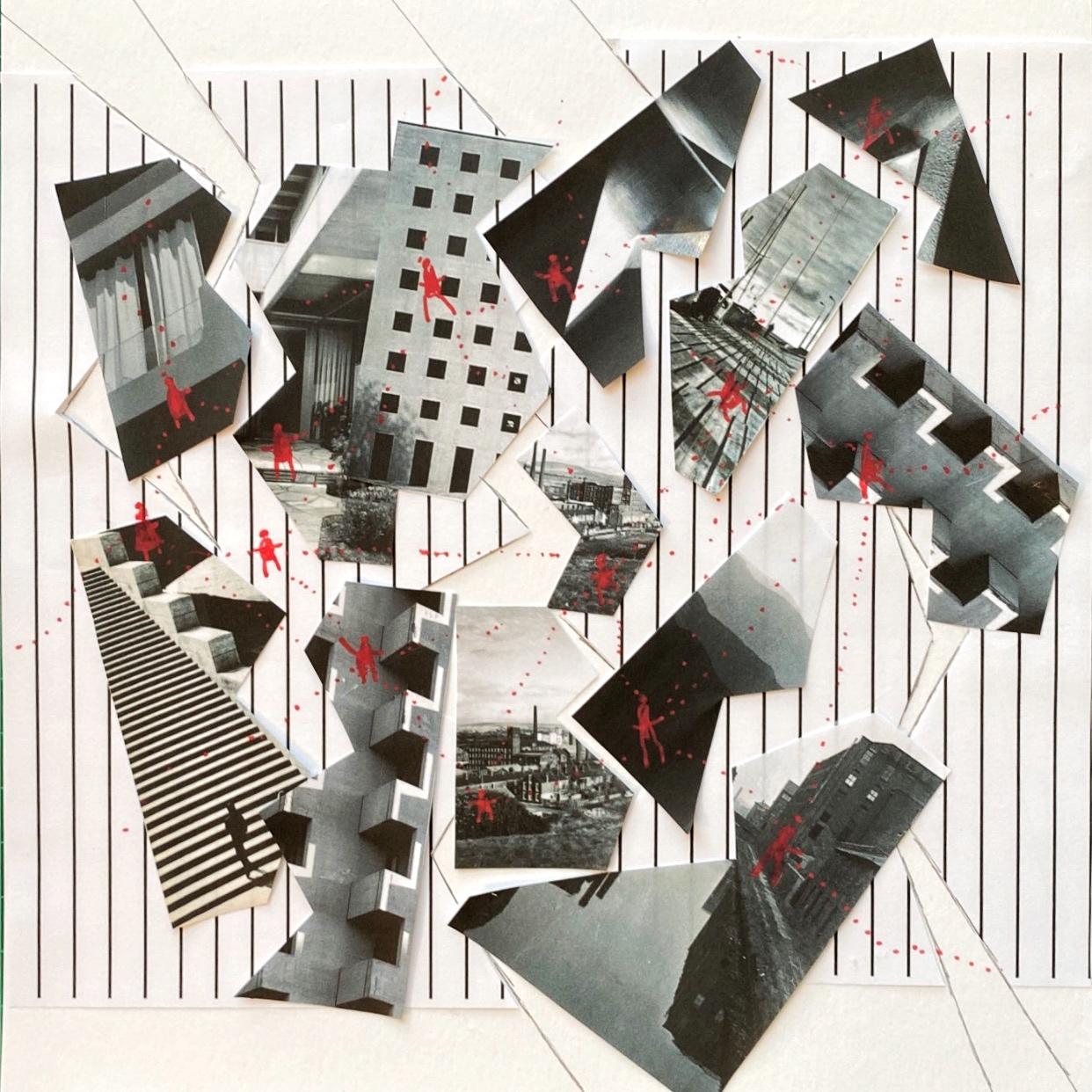
Relationship Between Human and Non-Human
Utopia is a critique of reality and an imagination of another better existence. Under this big topic, I have a strong desire to reposition human beings with non-humans and break the existing boundaries of different spaces both physical and mental.
The thesis questions the relationship between humans and the non-human living world, in particular the human relationship to trees. It asks what we can learn from a deeper understanding of the ways that trees communicate and create productive co-dependencies through their vast underground mycorrhizal networks. The thesis extends this questioning from human interrelationships, and human to non-human relationships, and raising questions on whether the way humans reconstruct the physical and living world to meet their needs and dreams might be different or less destructive if we see ourselves and our creations as part of that critical interconnected web of interdependencies and co-generation. The thesis is framed within this systems view of life and by doing so positions all species – the human and more than human world, along with their physical creations, as critically interwoven with the psychological and emotional networks of the whole.
Image
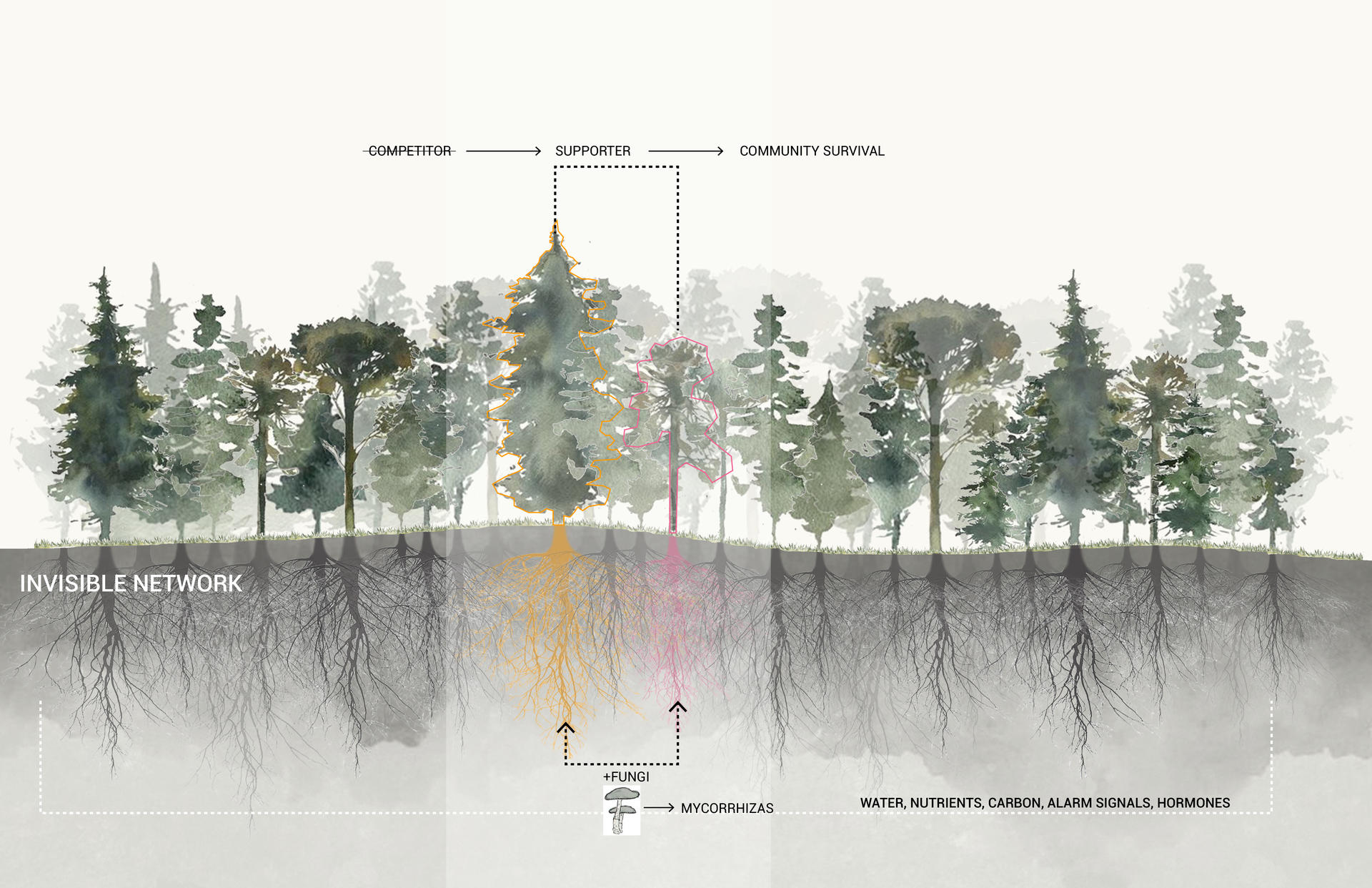
Invisible Network
When I look back to the social life of forest. I was amazed by this invisible enormous network underneath the ground. It represents the partnership formed by the tree and fungi called mycorrhizae. Because of this network, trees can exchange water, nutrients, carbon, alarm signals and hormones. In comparison to Darwin’s Natural Selection, trees are supporters to each other not the competitors. It proves that the community survival is better than simply individual survival. This is exactly the relationship I hope for all beings.
Image
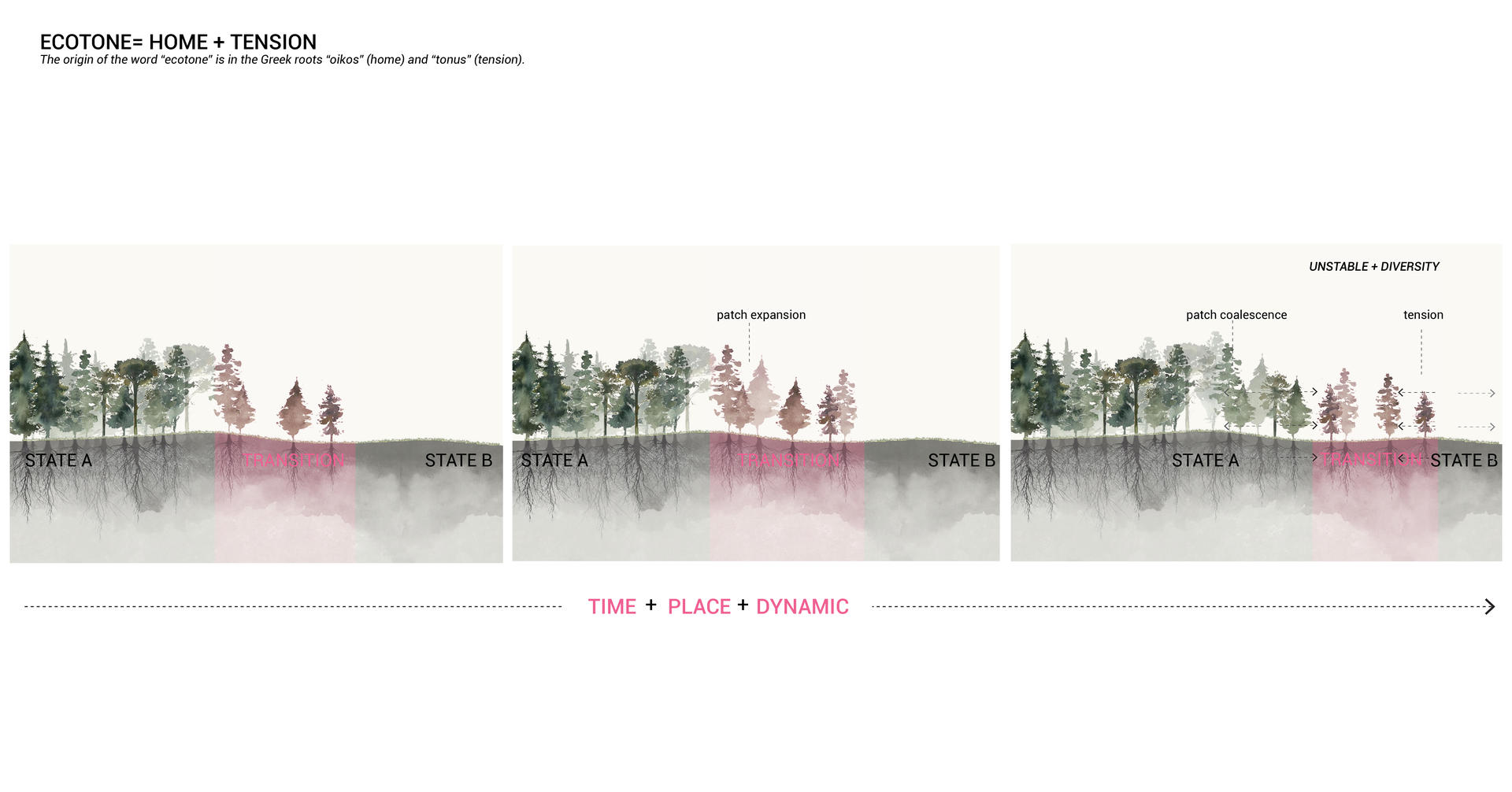
Ecotone
An ecotone is the transition zone between two or more different communities. This thesis will talk about the time, space, and dynamic characters of it, and use it to rethink our urban living environment. Taking the relationship between humans and trees as the starting point to understand the interconnection and interdependence, design is used as a tool to reinforce people’s awareness of this relationship.
Image
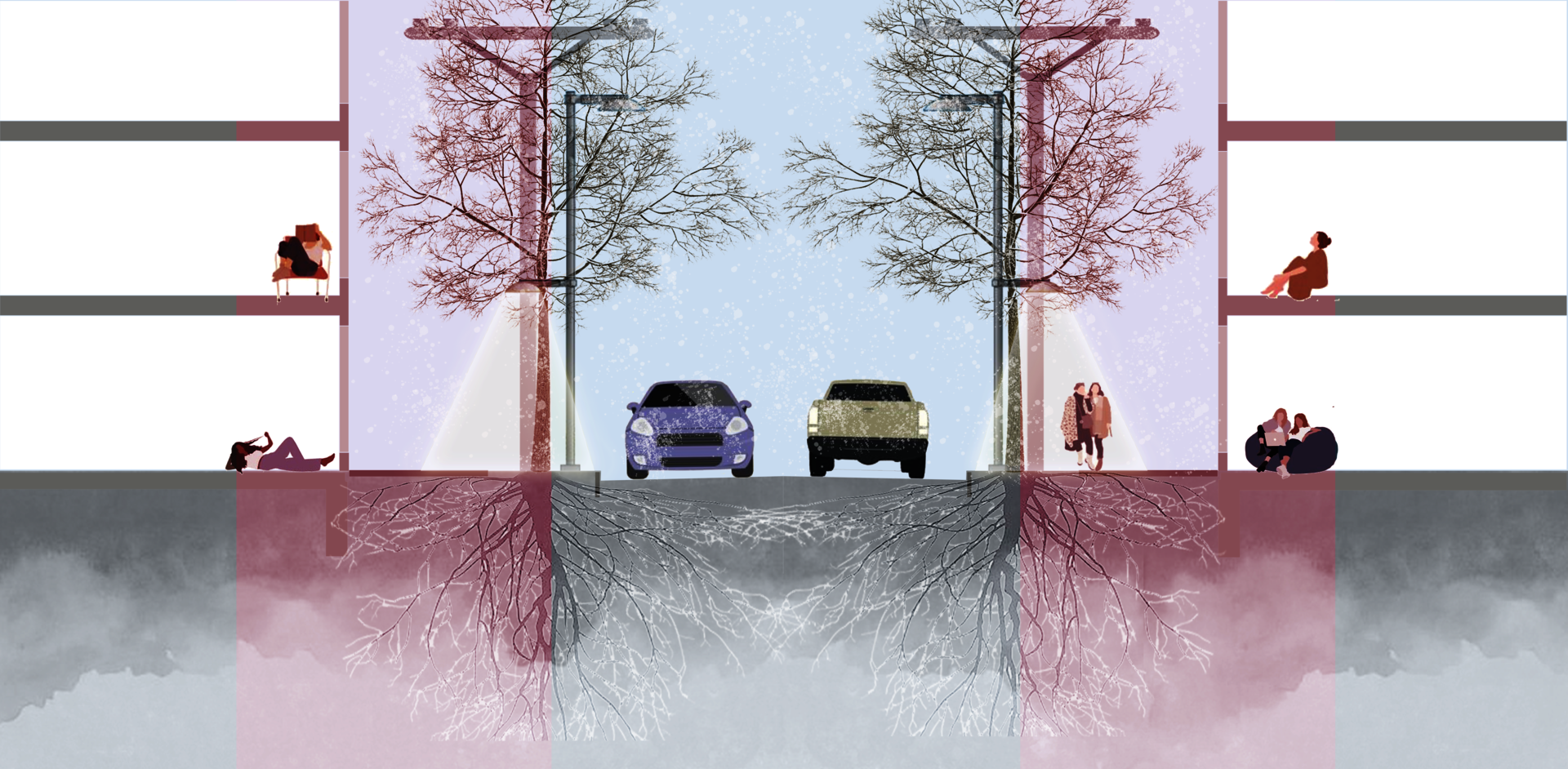
Image
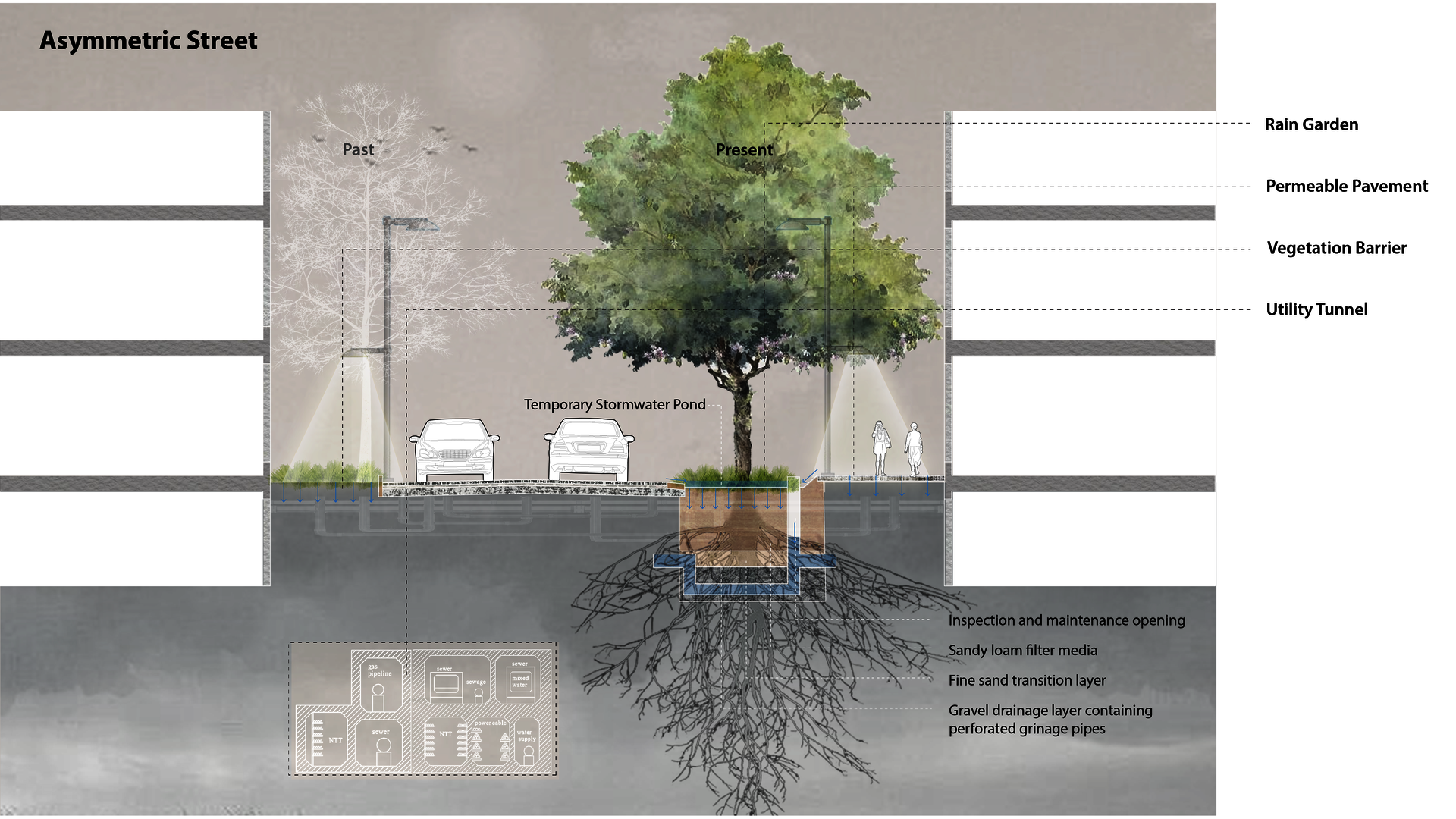
Urban Ecotone
In my research, I mostly focus on the ecotone in the urban area which acts as a transition area and that’s crucial to human and non-human communication. I also look at how trees survive in this “unnatural” environment, respond to and communicate with their surroundings and with humans. With the analysis of different zones and flows in the vertical and horizontal spaces on both physical and mental levels, I put myself in the point of view of the tree to ask: “what kind of space do I need, how do we trees and humans complement each other?” In the final stage, I come up with an asymmetric street model that places the street trees and the utility tunnel on the different sides to resolve the conflict with the built environment, allowing the tree the needed room to grow in a healthy environment.
Image
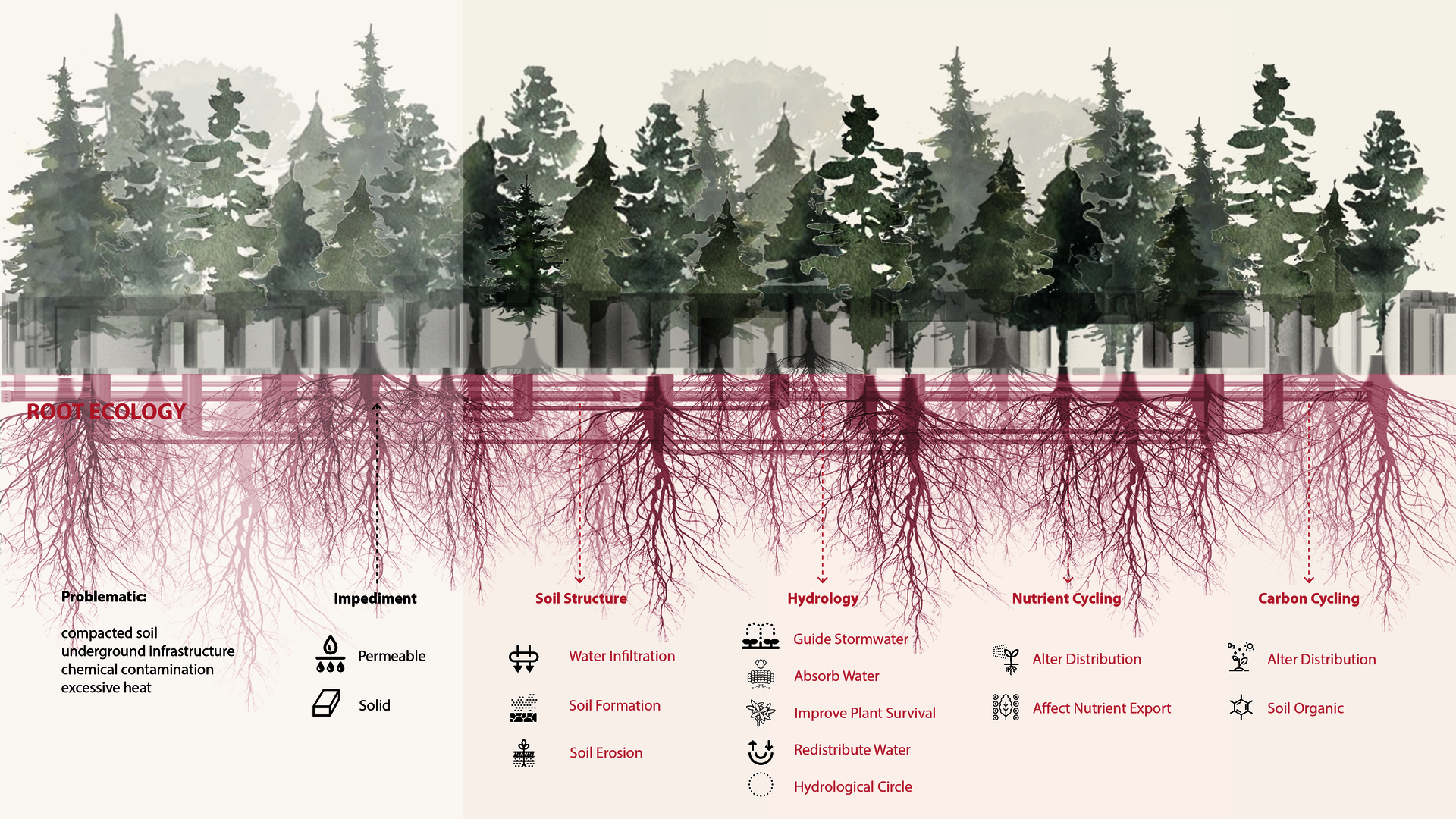
Image
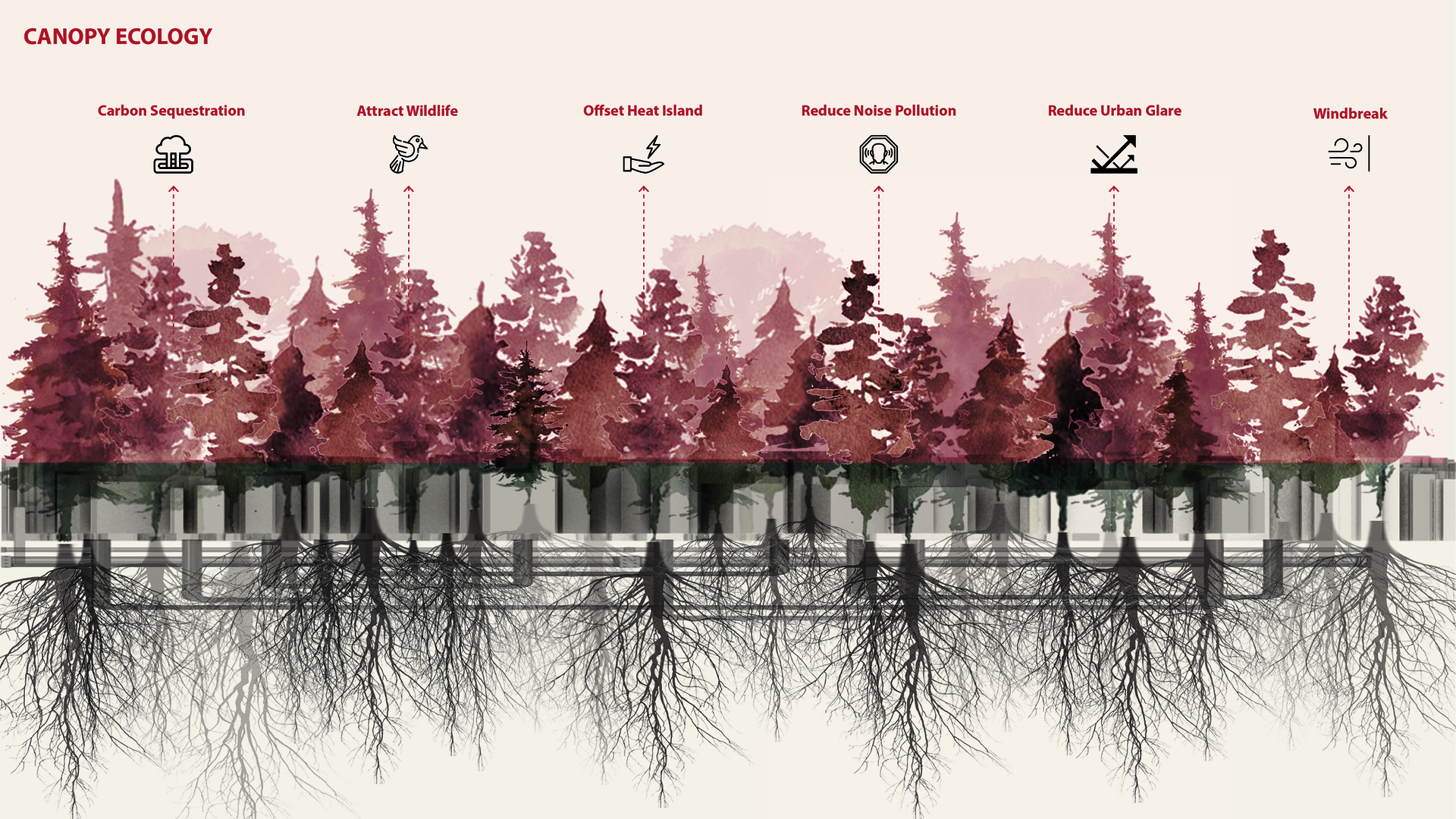
Living in the Forest
With the background of calling for planting more trees and paying more attention to the related social equity issue that different communities don’t have the same opportunities to the trees and shades have been prominent, as a landscape architect, how do we plant and manage trees would be the point I’m concentrating on. I take a step back, expand my thesis to a broader ideal view, and start to imagine “living in the forest.” Tear up the hard surface and plant the maximum quantity of trees, keep the existing buildings and imagine them as glacial boulders, regard everything around to be a plant forest, and ponder: What would it take to make a healthy urban forest? Once we have a healthy urban forest, How do we manage life in a forest? What is the forest ecology that we could live within?
Image
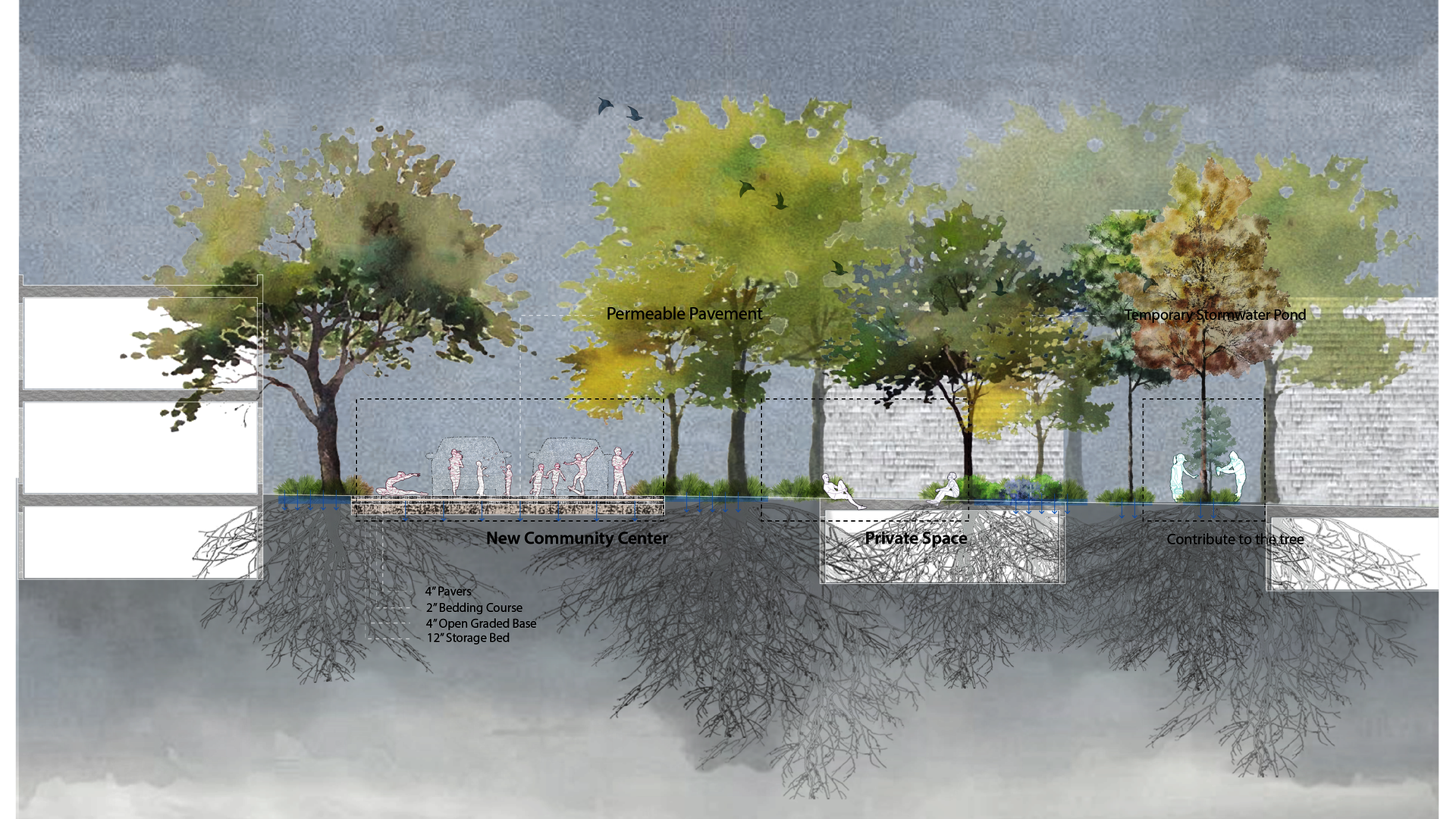
Re-Forest
I’ve challenged my way of thinking, proposing to reframe the city from the bottom up, by raising several strategies for the existing situation and maximizing the benefits which trees provide to us. I finally came up with a utopian and ideal imagination of the city from a broader perspective, taking the Fox Point community as an example to test my idea, embraced the wisdom of the nature be the logic to motivate our design, to create sustainable green communities in the urban forest context, and to solve the social issues. I hope this “utopian” way of design and thinking will awaken people’s awareness and interests to build empathy with non-human beings.
